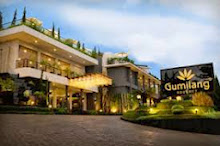Dell Studio One 19 Desktop Computer Baru DPR - Dell has unveiled a concept laptop featuring a 16-inch OLED screen showing what could be possible in the future for notebooks. Packed into a Studio XPS 16, the OLED is just 2mm thick and comes with virtually a 180-degree viewing angle.
If that wasn't enough to get you giddy with excitement, the screen offers a contrast ratio that exceeds 10,000:1 and come with a response time of 0.004ms, 1000 times faster than current LCD technology.
The only concern we have? It means virtually everyone on the train is going to know what you are working on.
LED-lit TVs are the new darlings of HDTV manufacturers. These panels are a lot more energy-efficient and deliver some of the best picture quality among all flat-screen displays. Having said that, most LED-lit TVs do not come cheap and usually cost a premium. If you're not deterred by their higher sticker price, here're guidelines to get the best out of your purchase.
There's currently no industry-wide categorization for this relatively new type of HDTV. Technically, it is known as an LED-lit LCD TV or loosely referred to by Samsung as "LED TV" like the giant screens deployed in stadiums and malls. Still, LED panels can be singled out by their LED backlighting technologies which enable better picture quality, power efficiency, eco-friendliness, as well as sleeker bezel designs. They also cost much more than a comparable-sized flat screen.
The sleek 29.9mm-thin Samsung "LED TVs" that made LCD-lit flat panels sexy.
1. It's not exactly a different type of TV
An LED-lit TV is just an LCD TV that's backlit via light-emitting diodes (LEDs) instead of the regular cold-cathode fluorescent lamps (or CCFLs). While the former have come into the spotlight this year with Samsung's ultrathin models, LED-backlit LCDs have been around since 2007 when the Korean's LA70F91B debuted. Unlike plasma and OLED, which are emissive technologies where each pixel is its own discrete light source, LCD is transmissive and has to be separately illuminated.
2. LEDs are energy-efficient and eco-friendly
It's definitely true that LED backlighting can cut down on power use, and some LED-lit LCDs are--inch for inch--the most efficient flat panels available. Samsung's edgelit LA46B6000, for example, costs just US$18.73 per year to run based on US electricity tariff (after calibration to equalize light output). That said, standard fluorescent backlighting is getting more efficient, too. A similarly sized CCFL-based LA46B650 costs just US$8 extra in comparison. In other words, the actual savings is not substantial, though these LEDs are more eco-friendly because they do not contain toxic lead.

Tidak ada komentar:
Posting Komentar